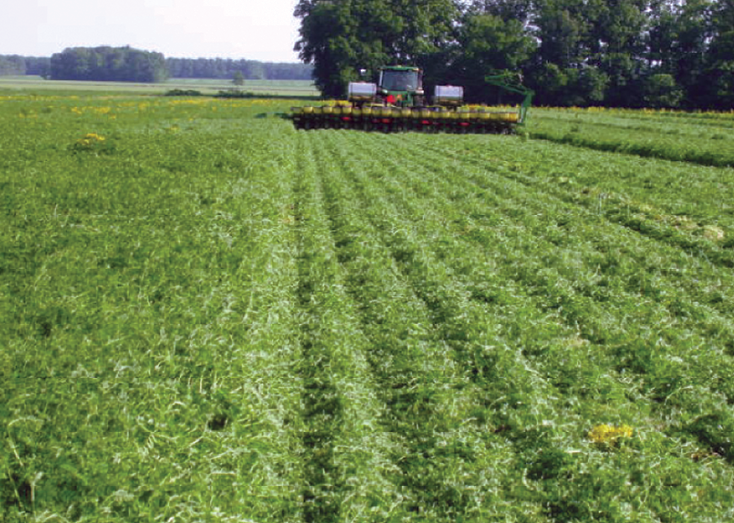No-Till Farmer
Get full access NOW to the most comprehensive, powerful and easy-to-use online resource for no-tillage practices. Just one good idea will pay for your subscription hundreds of times over.

Terry Taylor has spent much of his adult life figuring out how to unlock the potential of cover crops on his southern Illinois farm.
But it’s clear today that it’s working for Taylor. Cover-crop mixes seeded into his tough, clay-laden soils are soaking up excess moisture, fixing or scavenging nitrogen, spurring earthworm activity and giving corn roots a place to grow.
To be successful with cover crops, it’s important for no-tillers to start with a basic program and not take setbacks on their farm personally, Taylor told attendees at the 2012 National No-Tillage Conference.
“Start with the concept of a bicycle and training wheels, and if you’re past the training wheels, then go to the next step,” he says.
Taylor farms 1,600 acres of corn and 400 acres of soybeans near Geff, Ill., about 100 miles east of St. Louis, Mo. He’s found the organic components in corn do the best job of building soils, but cover crops help him further by loosening and fortifying soils that are not well drained or the most fertile.

Taylor described an albic layer — a nearly white fragipan in his farm’s soil profile — that has little or no structure and forces roots to move through cracks and fissures.
“If we don’t get a root through that layer before the soil dries out in June, it never will go through,” Taylor says. “It’s a cap to all our rooting opportunities for the rest of the summer.
“But if we put an…